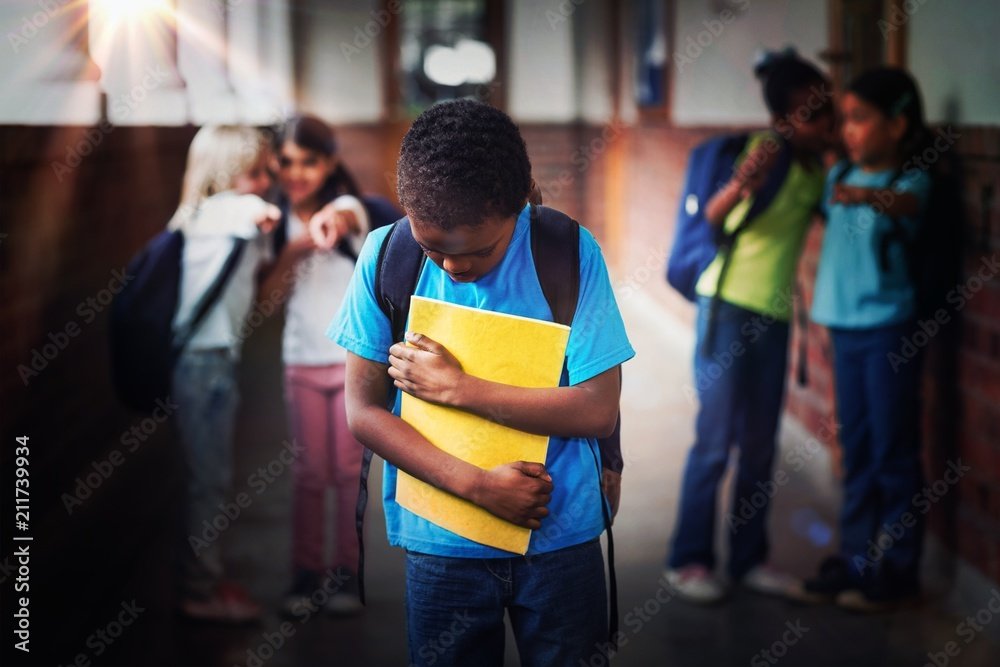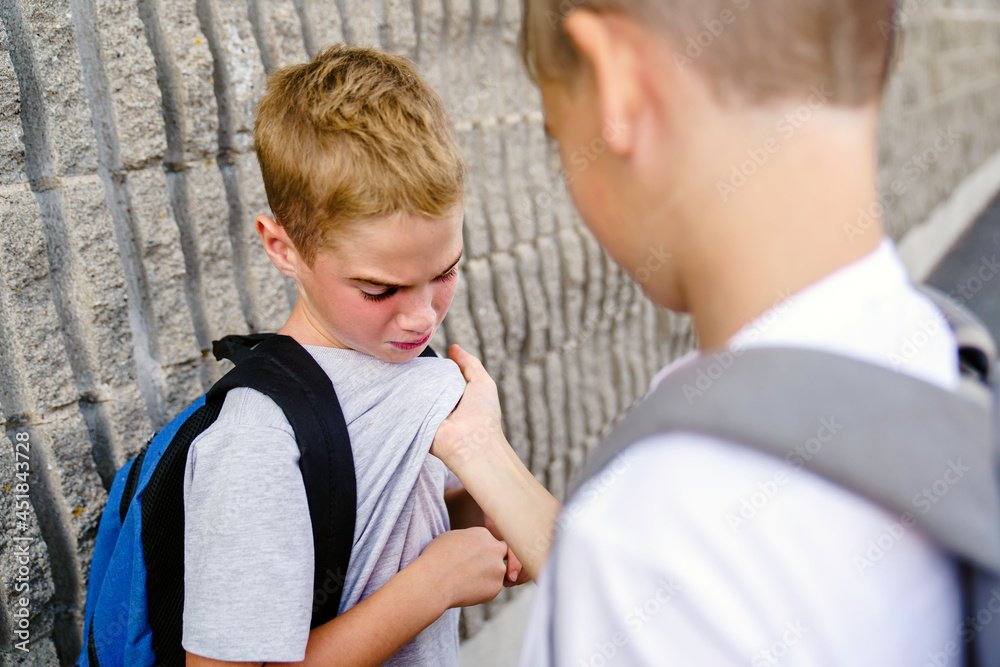The following information is not meant as a substitute for qualified professional advice.
Bullying
Bullying is an aggressive behavior that involves an imbalance of power or strength. Bullying is repeated over time and can take many forms, such as hitting, punching, or shoving (physical bullying); teasing, taunting, name-calling, or sexual remarks (verbal bullying); intimidation using gestures, spreading rumors, or social exclusion (psychological or social bullying).
Nearly 1 in 5 students (20%) report bullying during the school year. It can occur anywhere at home, school, church, the park, malls, playgrounds, work, etc. These areas usually include places where supervision is minimal or hidden areas where the chance of getting caught is slight (i.e., locker rooms or restrooms).
If your child is being bullied, download the PDF below to see what you should do.
Types of Bullying
Verbal Bullying: Saying or writing mean things (i.e., Name-calling, teasing/taunting, threatening, insults, inappropriate remarks, comments, etc.)
Psychological (or social) Bullying: Hurting someone’s reputation or relationships (i.e., Spreading rumors, isolation, telling others not to be friends with them, embarrassing someone publicly, exclusion, etc.)
Physical Bullying: Hurting a person’s body or possessions (i.e., hitting, slapping, elbowing, shoving, spitting, kicking, breaking, or taking someone’s belongings, etc.)
Signs of Bullying
Bullied children and youth are likelier to exhibit several symptoms than their peers.
Physical Symptoms:
Unexplained bruises, scratches, and cuts
Trouble sleeping or frequent nightmares
Frequent headaches or stomach aches, feeling sick, or faking illness
Changes in eating habits, like skipping meals or binge eating
Lost or destroyed clothing, books, electronics, or jewelry
Behavioral and Psychological Symptoms:
Loss of interest in school and extracurricular activities
Feelings of helplessness, anxiety, or decreased self-esteem
Seems sad, moody, or depressed
Self-destructive behaviors (ex., cutting)
Suicidal thoughts or ideas
Social Symptoms:
Frequent complaints of illness to avoid attending school
A sudden decrease in academic performance (declining grades or loss of interest)
Fear of going to school, riding the bus, walking to school, or taking part in organized activities with other peers
Sudden loss of friends or avoidance of a social situation
Causes of Bullying
Anyone can engage in bullying behaviors for a variety of reasons. Bullying behavior can arise from distrust, fear, and misunderstanding. A person is more likely to engage in such destructive behaviors for any of the following:
Dislike for another person
Seeking revenge on another person or retaliation
Seeking popularity
Seeking power and control
Prejudice
Peer pressure
Pleasure or “for fun.”
Effects of Bullying
Bullying, especially among youth, can result in lasting, life-changing effects, often controlling that individual’s daily life. The effects of bullying can include, but are not limited to, the following:
Psychological and Mental Health Effects:
A significant drop in self-esteem, often lasting into adulthood
Likeliness to struggle with negative emotions every day, affecting their outlook on others and themselves
Higher rates of depression and anxiety
Increased sadness and loneliness
Ongoing stress
Physical Effects:
Physical ailments caused by psychological distress, such as chronic headaches or stomach aches
Sleep difficulties
Social Effects:
Limitations in their ability to form friendships or other relationships
Lack of trust and wariness of other people
Lower levels of confidence
Academic Effects:
Fear or avoidance of school in general
Decrease in academic performance
Increase in stress which interferes with memory, retaining information, learning ability, or trouble focusing
Alteration of a person’s academic views (i.e., no longer desires to pursue higher education or wants to drop out)
Almost all forms of bullying peak in middle school, specifically 6th-grade students reported the highest percentage of bullying (29%)
Immediate Crisis Hotlines
If you or someone you know is in suicidal crisis or emotional distress, call the National Suicide Prevention Lifeline at 9-8-8, a free 24-hour hotline. In the case of a life-threatening emergency, call 9-1-1 or visit your nearest emergency room. Below is an additional list of crisis resources.



